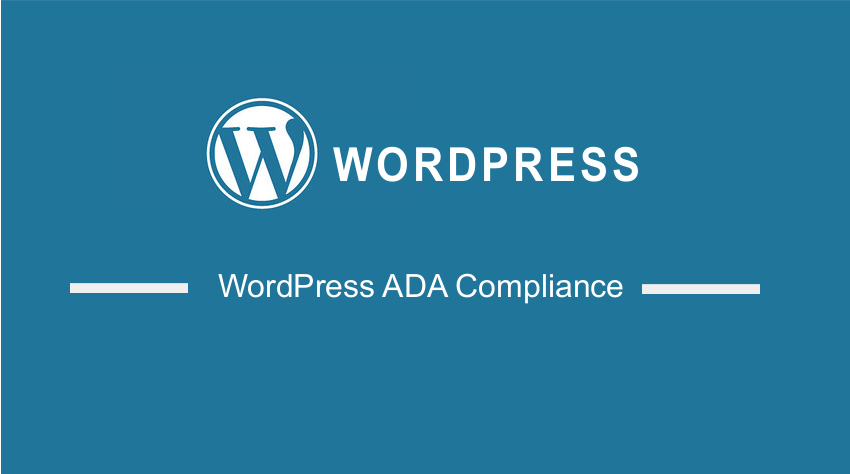 Do you want to make WordPress site ADA compliant? In today’s post, we will share steps on how to make WordPress website ADA compliant. This is a complete guide on WordPress ADA compliance. This is one of the commonly asked question that is similar to the previous post on how to install Classic editor in WordPress.
Do you want to make WordPress site ADA compliant? In today’s post, we will share steps on how to make WordPress website ADA compliant. This is a complete guide on WordPress ADA compliance. This is one of the commonly asked question that is similar to the previous post on how to install Classic editor in WordPress.
It is important to note that the Americans with Disabilities Act (ADA) ensures that people living with disabilities have an equal right to access housing, employment, and transportation. In addition, they should be able to access the digital world. This is why you need to create a WordPress ADA compliant website.
If you are a private employer with 15 or more staff members or if your business benefits the public, you need to be ADA compliant. Some of the accessibility standards for websites are subtitles or transcriptions, accessible design to accommodate color-blind users and keyboard navigation. This will ensure that the content available on your website is accessible to people with disabilities.
How to Make WordPress Website ADA Compliant
Fortunately, creating an ADA compliant website is not a complex process. This is because there are lots of information and software to help you out.
Let us look at the steps you need to follow.
Summary Steps
- What is a WordPress ADA Compliant Website?
- Review Your Website
- Follow Best Practices for Creating ADA Compliant Websites
- Install Plugins to Improve Your Site’s Compliance
Steps to Create a WordPress ADA Compliant Website
By the end of this post, you will be able to create a WordPress ADA compliant website. It is worth mentioning that you do not need any coding skills to implement this solution. Here are the 4 simple steps you need to follow:
1. What is a WordPress ADA Compliant Website?
A WordPress ADA compliant site follows the Web Content Accessibility Guidelines (WCAG). It is important to note that the U.S. Department of Justice has not yet released ADA compliance guidelines. However, it is important to note that it has provided some recommendations.
Implementing these guidelines allows everyone to perceive all the information across your website. You can also provide additional guidance on how users can interact with your site.
2. Review Your Website
It is important to create a user-friendly website. This will ensure that all your visitors have a positive experience with your site. This is why you need to review your website to see how compliant it currently is by using a web accessibility evaluation tool.
Web accessibility evaluation tools help you to identify the issues that can affect your site’s usability.
3. Follow Best Practices for Creating ADA Compliant Websites
After reviewing your website and compiling your results, you need to start addressing each concern. For starters, you can provide alternative outputs for all your media. We also recommend providing professionally transcribed subtitles for videos and audio.
In addition, we recommend maintaining a contrast ratio of at least 4.5:1 for all your text. This will help to support visitors with visual impairments. The text should also be resizable.
- Install Plugins to Improve Your Site’s Compliance
It is worth mentioning that there are WordPress tools and plugins that can help you create an ADA compliant website. For example, a plugin like WP ADA Compliance Check Basic, allows you to scan your entire site for accessibility issues. It also suggests resources that provide more information about the issues detected.
Alternatively, you can use the Accessibility Checker plugin. It provides you with various accessibility-focused settings depending on the theme you are using.
Wrapping Up
It is very important to make your website easily accessible to allow everyone to view all the content across your site. This is the right thing to do and it can also protect you against legal issues regarding discrimination against people with disabilities.

